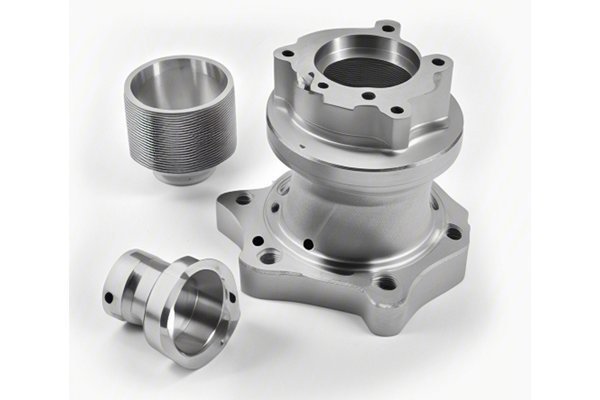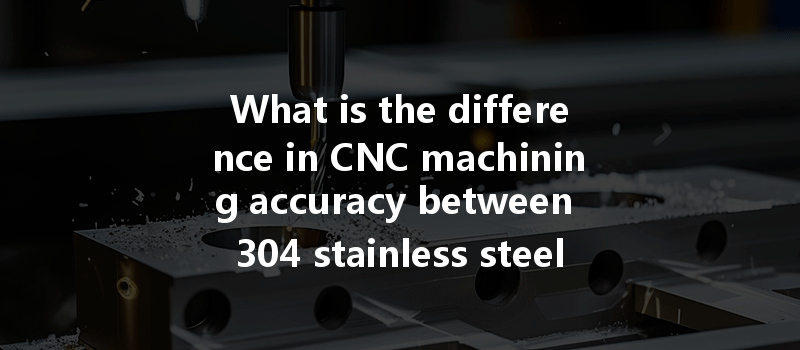Did you know that the general accuracy of CNC (Computer Numerical Control) machining can vary significantly based on the material being processed? For manufacturers and engineers, choosing the right metal for a specific application is not just about availability or cost; it also profoundly impacts the precision and effectiveness of the machining process. In this blog, we will delve deep into the differences in CNC machining accuracy between 304 stainless steel and 2205 duplex stainless steel, two widely used materials in various industries.


—
CNC machining has transformed the manufacturing landscape, providing unparalleled precision and repeatability in producing complex parts. With the ability to automate machining processes, manufacturers can achieve high accuracy levels that manual methods simply cannot match. However, the accuracy of CNC machining is not a one-size-fits-all scenario; it varies significantly depending on the material used. In this blog, we will focus on two popular stainless steel grades: 304 and 2205 duplex stainless steel.
Chemical Composition
304 stainless steel is an austenitic grade known for its excellent corrosion resistance and good formability. Its primary alloying elements include:
Mechanical Properties
Typical Applications
Thanks to its excellent properties, 304 stainless steel is commonly used in various applications, including kitchen equipment, food processing machinery, and chemical containers.

Chemical Composition
2205 duplex stainless steel is a blend of austenitic and ferritic stainless steels, offering superior strength and corrosion resistance. Its composition includes:
Mechanical Properties
Typical Applications
Due to its high strength and resistance to stress corrosion cracking, 2205 duplex stainless steel is frequently found in oil and gas applications, pressure vessels, and marine environments.
Understanding CNC Programming
CNC machining involves programming a machine to operate based on predefined parameters. These parameters dictate the tool paths, speeds, and feed rates necessary for machining a specific part.
The Importance of Tool Selection
Choosing the right cutting tools is crucial for achieving optimal accuracy and surface finish. The hardness and machinability of 304 and 2205 stainless steels necessitate different tooling approaches.
Material Properties
The specific material properties of stainless steels, including hardness, tensile strength, and ductility, influence the machining accuracy.
Tooling and Equipment
Machine calibration, tool sharpness, and rigidity of the setup can all affect accuracy. 304 typically requires less tooling intervention than the harder
Environmental Conditions
External factors such as temperature and humidity can also impact CNC machining accuracy by affecting tool wear and material properties during processing.
Dimensional Tolerances
304 stainless steel can often achieve tighter dimensional tolerances than 2205 due to its lower strength and better machinability. Typically, tolerances of ±0.005 inches can be expected from 304 versus ±0.007 inches for
Surface Finish
The surface finish achievable with both materials differs, with 304 generally yielding a finer finish compared to
Repeatability
Repeatability is essential in high-volume production. Here, both materials perform well, although 304’s less aggressive cutting requirements contribute to its consistency.
Application of 304 Stainless Steel in CNC Machining
A manufacturer producing kitchen equipment experiences fewer indicator fluctuations when machining 304, leading to a consistently high-quality finish.
Application of 2205 Duplex Stainless Steel in CNC Machining
Conversely, a company machining 2205 for oil rigs must regularly recalibrate due to its higher hardness, affecting their production timelines but still meeting the necessary standards.
In conclusion, understanding the differences in CNC machining accuracy between 304 stainless steel and 2205 duplex stainless steel is vital for manufacturers aiming for efficiency and quality. While both materials have unique attributes and respective applications, recognizing how these affect machining processes can lead to improved product reliability and performance.
This exploration of CNC machining techniques not only sheds light on material properties but highlights the importance of informed decisions in manufacturing. As industries advance, continually weighing the pros and cons of each material in your machining process will help foster technological growth and product innovation. The importance of these discussions in the modern manufacturing landscape cannot be overstated, and they warrant deep consideration from all stakeholders involved.




